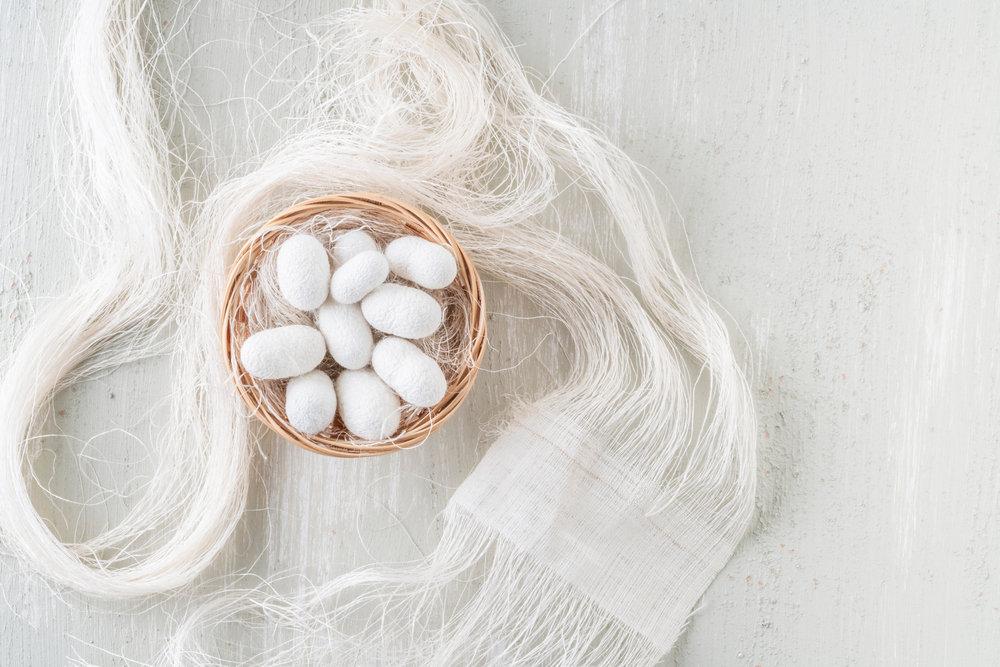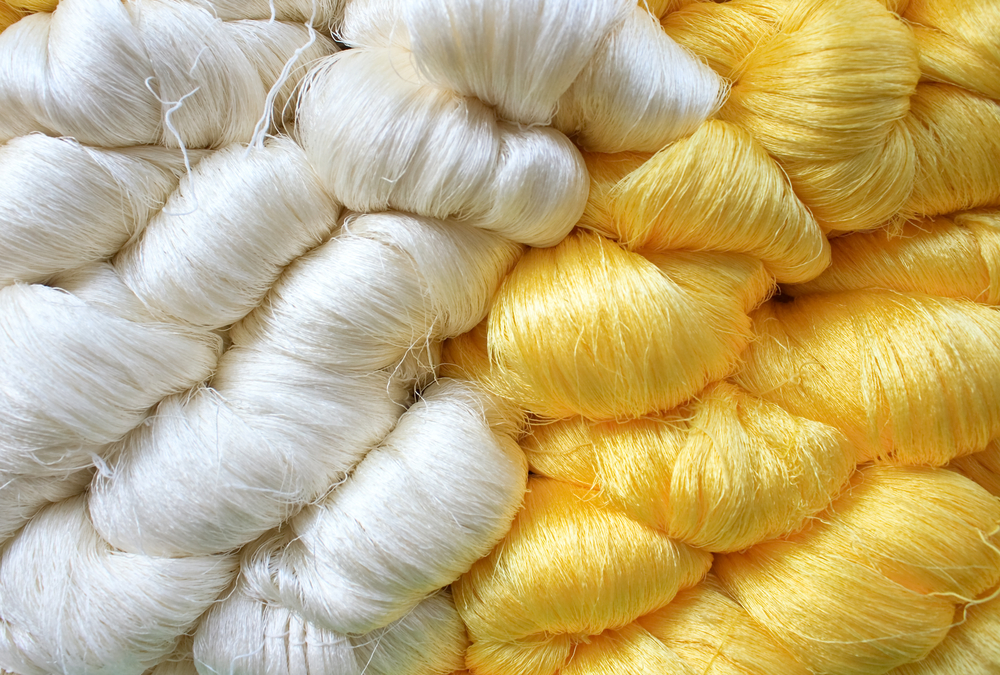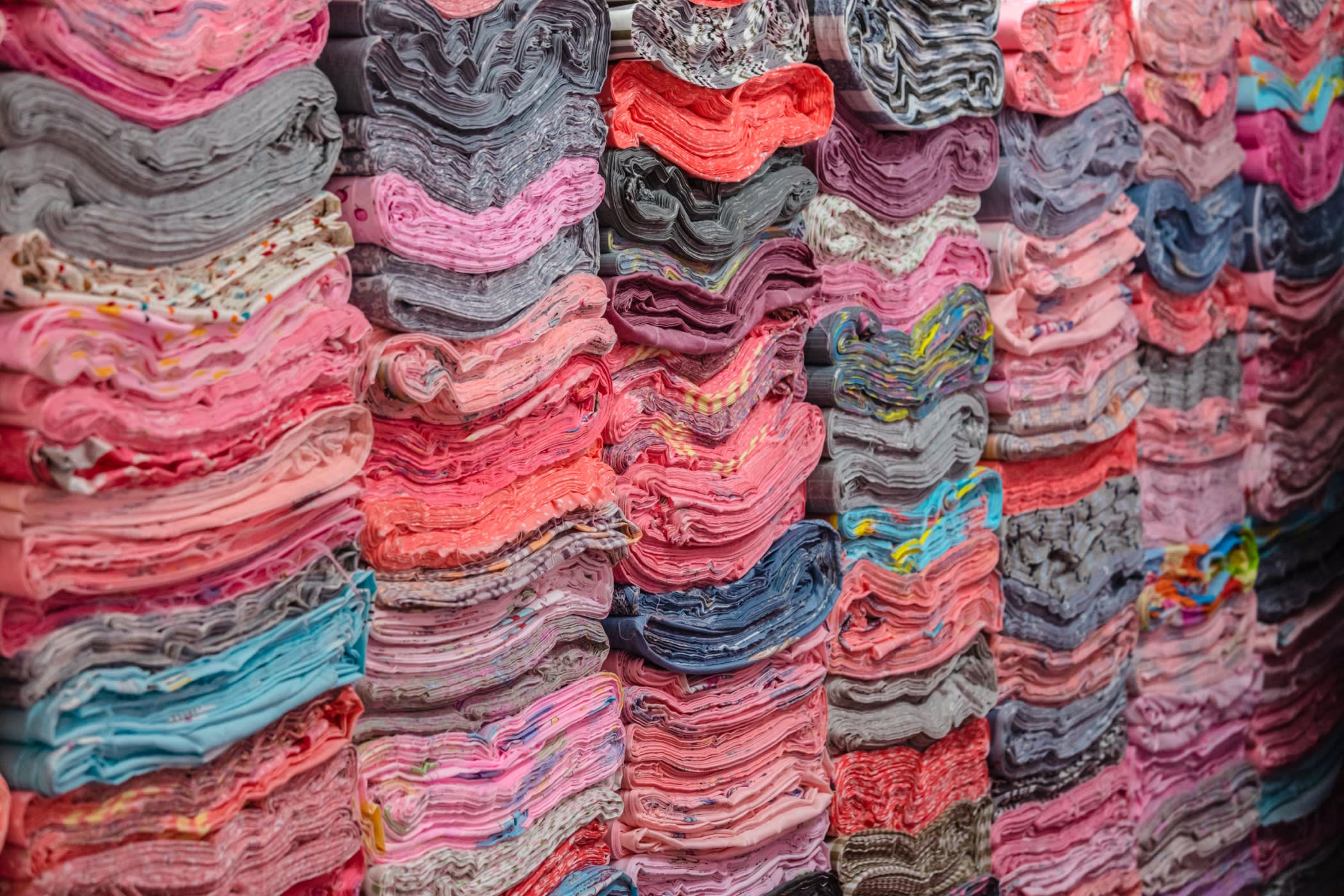Silk Produced from Genetic Engineering



Did you know that silk fabric can help us heal wounds quicker? Would you believe that silk fabric produced from a spider is so vital that it can stop a bullet? Yes, both are true, thanks to genetic engineering in silk production. There is a tremendous focus on enhancing the silk quality and creating artificial raw silk fabric. This is being done so that silk can be utilised in the biomedical field and several other areas, such as producing better wound healing bandages, fine quality suture material, strong automobile airbags, and bulletproof jackets.
Spider silk is stronger and more elastic than the natural silk produced by silkworms. Hence, the apparel industry is keen on using artificial spider silk to develop new-age athletics and sportswear that are durable and skin-friendly. As of now, scientists have developed genetically-engineered silk in smaller quantities as part of their study and experiments. Hence, the big question remains: Can this enhanced raw silk fabric be produced massively? The good news is that there has been a lot of improvement, and scientists say that it is now commercially viable to produce artificial silk fibre.
Let us learn more about raw silk production and how genetic engineering is crucial in enhancing silk fabric quality.
Sericulture and processing of raw silk
Before we learn advanced ways of making silk, we should do a quick refresher on silk production. Below is a step-by-step process:
- The first step is also known as Sericulture. It involves gathering silkworms and harvesting the cocoon to collect the materials.
- The next step is thread extraction by boiling the cocoons in hot water until the gum dissolves. Thread is collected carefully, making sure there is no damage.
- After thread extraction, it is bleached and dried to prepare for dyeing.
- Dyeing silk fabric gives it unique quality and colour. Dyeing can happen with both traditional as well as advanced methods.
- Once dyeing is complete, spinning is done to untangle the fabric, collect and store it to make it ready for weaving and printing.
The final processing of silk fabric involves weaving, printing and finishing. The end product is a lustrous silk fabric of different weave patterns and colours that apparel and other leading industries are ready to use.
Different types of silk fabrics

Silk fabric is made of various types of insect proteins. Let us look at different types of silk.
Mulberry silk
The most common type of silk is produced by the mulberry silkworm Bombyx mori. It accounts for almost 90% of silk made across the world. Mulberry silk is the finest quality of silk. If you read 100% silk anywhere, most likely, you are looking at mulberry silk.
Sea silk
Sea Silk comes from the Mediterranean region. It's rare and costly since it doesn't come from land species such as spiders and worms. It comes from a specific mollusc known as the “Pinna Nobilis”. It's hard to find sea silk with the mollusc on the verge of extinction.
Tasar silk
The golden-coloured silk is found in Japan and South Asian countries like China, India and Sri Lanka. It comes from the silkworm of the moth family living in dense forests. Compared to Mulberry silk, it is more textured, less soft and durable. Due to its textured feel, its primary use is making external clothes and home decors items.
Eri silk
This unique silk comes from northeast India and China. Eri silk is heavier than other types of silk. Hence, it is not famous for clothing items. However, it has remarkable thermal properties that keep the body warm in the cold season and cool in summers. Eri silk is similar to wool and often used for making curtains, quilts and pillow covers.
Spider silk
Spider silk is the strongest type of silk. It is challenging to produce this fabric at a mass level. Hence, its textile use is problematic. The use of spider silk is limited to industrial purposes, like making bulletproof vests, parachutes, microscopes, etc.
Due to its tensile strength, scientists are genetically engineering silkworms to produce spider silk. Hopefully, the clothing industry will soon start using spider silk.
Muga silk (Assam silk)
Muga silk is native to one of the northeastern states in India called Assam. It has historical significance as royal families used it. Assam silk comes in handy in making traditional Assamese clothes and other Indian dresses like saree.
Coan silk
Similar to Muga silk, Coan silk is also location-specific. It comes from a silkworm called Pacypasa atus found in Greece, Italy and turkey. Production of Coan silk is limited, and it is primarily used with other types of silk fibre to make them stronger.
What makes silk special?

Silk is 100% natural fibre, made of fibroin protein. The shine, softness, and skin-friendliness make it perfect for making all sorts of garments. It is one of the oldest fabrics; before synthetic fibre like nylon came into existence, silk was produced. Its popularity can be estimated by the fact that it was once used as a currency in China. Yes, the length of silk decides the value or cost. It is fascinating that a particular road, known as the Silk Route, was created solely for trading silk from east to west. Interestingly, the path is still popular and a point of discussion due to its geopolitical importance.
What's good about silk fabric?
- Extraordinarily soft and lustrous fabric. Perfect for making high-end apparel.
- Silk absorbs moisture. Hence, it can be worn in summers.
- Silk fabric is super flexible and elastic, making it apt for men's undergarments and lingerie.
- It is solid and durable. No wonder people prefer silk to synthetic fibre.
- The qualities such as strength, lightweight and natural shine make silk a favourite material for home decor fabric like pillows and curtains.
- Skin fibre is harmless for inside body use and is skin-friendly. Hence, it is widely used by the medical industry for surgical purposes.
What's not so good about silk?
When compared to pros, there are hardly any cons with silk. However, there are a couple of points worth mentioning.
- The silk fabric shrinks while washing. Hence, the clothing requires extra maintenance and dry cleaning.
- Silk is not a good electricity conductor, which means people may experience more frequent static than other synthetic materials.
How is genetically-engineered silk different?
The genetic engineering for raw silk fabric is based on the extraordinary qualities of spider silk, such as its tensile strength, high-level elasticity and lightweight. Everyone knows about the massive potential of spider silk. However, besides the traditional silk fabric made from the silkworm, there was no way to produce spider silk on a large scale. Why? Spiders would eat each other if kept together.
There have been many experiments to make spider silk production commercially viable. Genetic engineering has solved the problem by developing specific proteins in silkworms using spider DNA. These genetically-engineered silkworms are known as transgenic silkworms and produce silk with qualities similar to spider silk. Hence, it has become easy to produce artificial spider silk at scale, making it economically viable.
Scientists are optimistic about developing genetically engineered silk fabric beyond the strength and elasticity of original spider silk. The future of silk production is super bright and exciting.
How to find out if the silk is genuine?
People working in textile, fashion, and retail industries often get caught between genuine and artificial silk fabric. Here are a few tricks to find out if you are looking at 100% authentic silk fabric or not.
- The original silk will not look flat in colour, and if the silk is not shiny, it is most likely artificial silk.
- Check the price if someone sells you silk at a seemingly low price. It's a red flag. Genuine silk comes at a cost.
- Do a thermal check or ring test. Genuine silk will get warmer when you rub it with your fingers. You can also try to pass it through the ring. Authentic silk will smoothly pass, and the artificial fabric won't.
- Check the label; many sell silk by calling it satin. Remember, satin is not silk; it is much cheaper and in no sense matches the high quality of genuine silk.
Conclusion
The retail business is expected to pick up the pace post-pandemic. Finding genuine raw silk can be challenging. This is where Fashinza, a marketplace that provides futuristic supply chain management for the apparel industry, comes to your rescue. It's an Amazon for the fashion industry, where manufacturers connect with suppliers to source their merchandise for retail. You can get excellent insights into how the modern fashion industry works.
The leading apparel manufacturing keeps the fashion supply chain production moving, no matter where you are. It covers everything from ordering, tracking, communication, and payments and even provides you with regular updates about the production, making the experience transparent, authentic, and hassle-free.



















